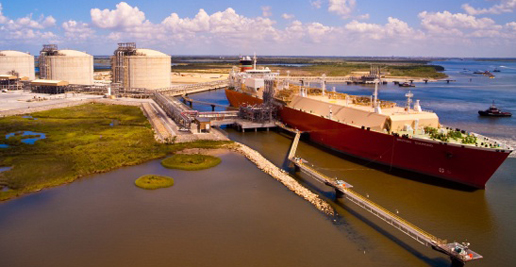CPC hopes for pipeline connection to China

Taiwan’s state-owned CPC is eager to see a gas pipeline bridging the island nation and mainland China – an ambitious project that could herald a new era of cooperation between the two countries.
Pipeline gas imports from China would expand Taiwan’s gas supply, as the island relies almost entirely on imported LNG to meet domestic demand.
“There’s a project being discussed and proposed from the Chinese side and also some private sectors, who will see if it is workable to build a pipeline to connect Taiwan and China. We hope that it will happen one day,” CPC Vice President Lin Sheng-Chung told Interfax on the first morning of Gastech in Seoul.
“We did make a proposal. It is one way of diversifying our source of gas supply,” said Lin.
A gas pipeline across the Taiwan Strait was first proposed in October by a vice chairman of one of Taiwan’s largest financial services groups. “Beijing and Taipei should team up to explore the feasibility of laying a pipeline,” said Hsueh Hsiang-chuan of Chinatrust Financial Holding at a bilateral forum in south China.
A cross-strait pipeline would be unlikely to pose major technical challenges, as the channel is only 130 km wide at its narrowest and around 60-70 metres deep. But Lin hinted at the diplomatic hurdles the project might encounter, noting “there are many issues”.
Building the pipeline would be fraught with political and security concerns, given that China’s ruling Communist Party regards Taiwan as a renegade province and has never ruled out the use of force to reunify the two countries.
However, ties between the nations have improved since Taiwan’s President Ma Ying-jeou took office in 2008, with the first direct flights between the two countries starting in May of that year.
Relations took a further step forward in February with discussions between the highest-level officials, the first since the end of the Chinese Civil War in 1949.
Building bridges
Beijing has proposed other infrastructure links, such as bridges and tunnels, in an attempt to bolster trade and economic influence, and Taiwan has already cooperated with China in the energy sector.
CPC signed a deal with China National Offshore Oil Corp. for spot LNG supplies in April last year. Weeks later, CPC farmed into an onshore exploration block in Myanmar owned by Sinopec. However, prospects have been disappointing, with the block deemed “not viable” and CPC now looking to exit the venture, Lin told Interfax.
CPC, Taiwan’s sole gas importer, paid $9.7 billion for 12.73 mt of LNG shipped from Indonesia, Malaysia, Nigeria and Qatar in 2012. The company said this month it had signed a six-year deal with Petronas for around 2.25 mtpa, replacing a 20-year agreement due to expire in 2015.
CPC has contracted for 0.8 mtpa from Cameron LNG, Chief Executive Chen Jei Yuan toldInterfax at Gastech. In January, the company received a delegation from Louisiana, where the Cameron LNG plant is located.
Taiwan’s turn towards United States LNG follows in the footsteps of companies from South Korea and Japan, as Asian buyers opt for more affordable and flexible supply.
Most Asian LNG imports are priced using the Japan Crude Cocktail formula, which has surged by 117% over the past five years, said Lin. The increase has led to a 170% increase in the cost of LNG imports, which has “eroded the national competitiveness” of Asian economies.
LNG demand across Japan, South Korea, China, Taiwan and India is forecast to increase by 80 mt over the next five years, rising from 166.3 mt in 2012 to 245.9 mt in 2020, according to Lin.
“With such large additional LNG requirements coming in the next five years, ensuring the stable supply of LNG at a reasonable price is a critical concern,” said Lin
“There has always been a divergence in the respective mind sets of LNG buyers and sellers. We, the LNG buyers, have long wanted to have the ability to buy at more afforda
ble and reasonable prices with flexible contract terms.”
In contrast, sellers are chiefly interested in ensuring their LNG projects generate profitable and stable returns. Both sides need to realign their expectations, said Lin.
Lin suggested three approaches for bridging the gap and ensuring the long-term sustainable growth of the Asian gas market: buyers expanding their supply portfolios by buying into export projects, developing pipeline gas connections or investing more in domestic production; enhancing price transparency; and expanding the market for LNG into sectors such as transport fuel and bunkering.
- Building Type Gas Regulator Box with doub
- Multipled gas regulator box/Regulator box
- Gas regulator for mesolow boiler/ Gas val
- Double lines gas regulator for boiler
- RTZ- ※/0.4A Series Direct-operated Gas
- RTJ-※/0.8GK Series Pressure Reducing Re
- RTJ- ※/0.4FK Series Self-operated Gas P
- RTZ-GQ Series Gas Pressure Regulator
- RTJ-SQ Series Gas Pressure Regulator
- RTZ-※/0.6 Type High-pressure Pipeline L
- What Is a Gas Regulator?
- How to Adjust a Gas Regulator
- How to Test a Fuel Injection Pressure Reg
- Gas Pressure Regulator Definition and Ope
- How Does a Natural Gas Pressure Regulator
- Compressed natural gas
- Pressure Regulators: Operation and Handli
- Compressed Gas Pressure Regulators
- How a Natural Gas Regulator Works?
- How Does a Natural Gas Regulator Work?
- CMR gas pressure regulator for dual-fuel
- Chinese Gas Pressure Reducing System Indu
- Oil and gas regulator chairman makes frac
- Gas Pressure Regulator Failure and Buildi
- CPC hopes for pipeline connection to Chin
- Dutch Gate LNG marks four months of reloa
- Ghana still waiting for gas-fired growth
- China’s SOE and gas price reforms pick
- DOE considers government control over LNG
- Angola LNG leases another tanker
